Abstract
In this paper, we analyze the process of excitation energy migration and trapping by reaction centres in photosynthesis and discuss the mechanisms that may provide an overall description of this process in the photosynthetic bacterium Rhodospirillum (Rs.) rubrum and related organisms. A wide range of values have been published for the pigment to pigment transfer rate varying from less than 1 ps up to 10 ps. These differences occur because the interpretation of trapping measurements depend on the assumptions made regarding the organization of the photosynthetic system. As we show, they can be reconciled by assuming a spatially inhomogeneous model where the distance of the reaction center to its surrounding pigments is larger than the pigment-pigment distances within the antenna. We estimate their ratio to be 1.7-1.8. The observed spectral inhomogeneity (at low temperature) of the photosynthetic antenna has resulted in various models. We demonstrate that the excitation kinetics can be modelled at all temperatures by assuming an inhomogeneous distribution of spectral shifts for each pigment. A transition temperature can be distinguished where the effects of spectral inhomogeneity become apparent and we discuss the ranges above (e.g., room temperature), around (e.g., 77K) and below (e.g., 4K) this temperature. Although the basic model is the same in all cases, the dominant mechanism differs in each range. We present explicit expressions for the exciton lifetime in the first two cases and demonstrate that at both temperatures the transfer rate from the light-harvesting antenna to the special pair of the reaction center is the rate-limiting step. Furthermore we demonstrate that at all temperatures a finite number of functional "levels" can be distinguished in the spectral distribution. At high temperature all pigments can be considered spectrally identical and only one level is needed. In the intermediate range a blue-shifted fraction is necessary. At low temperature a third redshifted fraction must be introduced.
Full text
PDF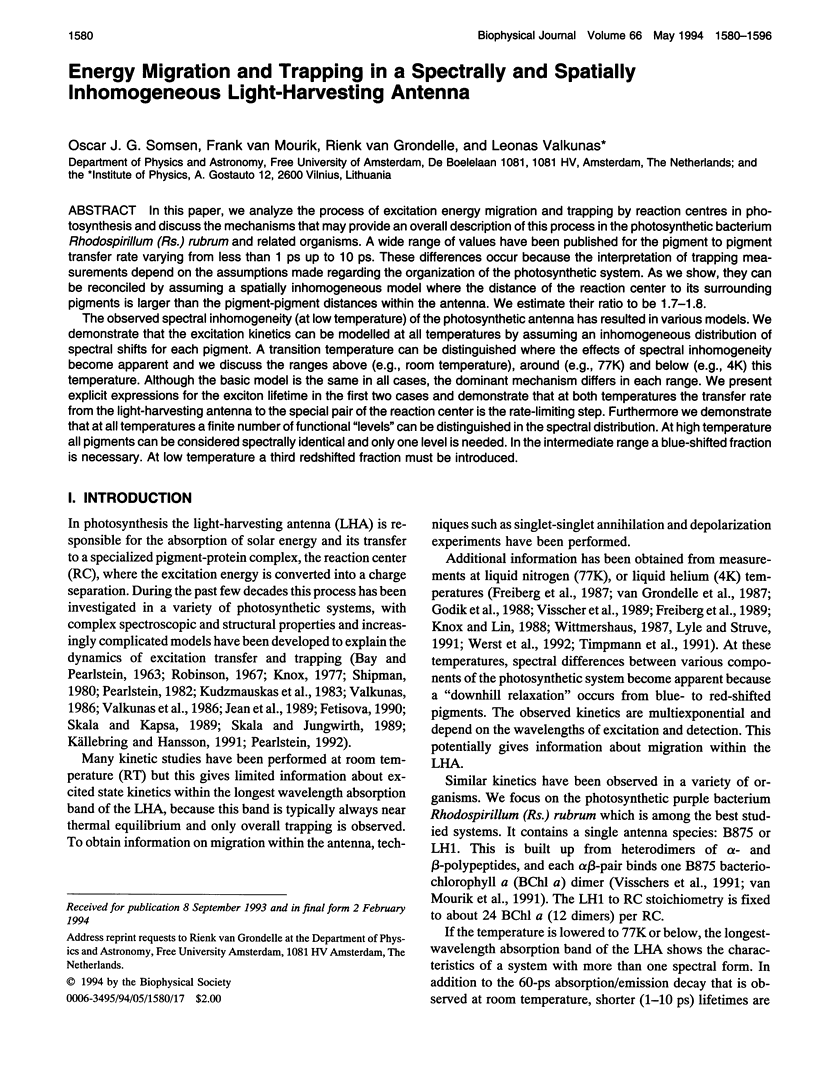
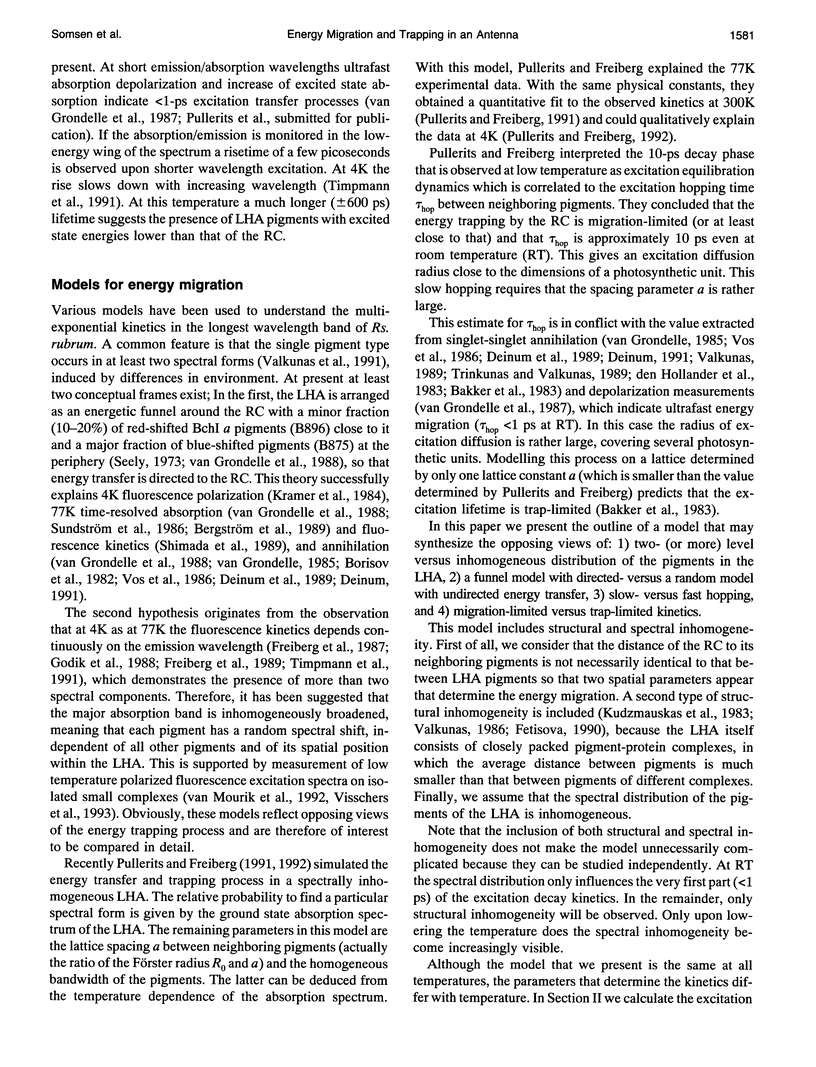
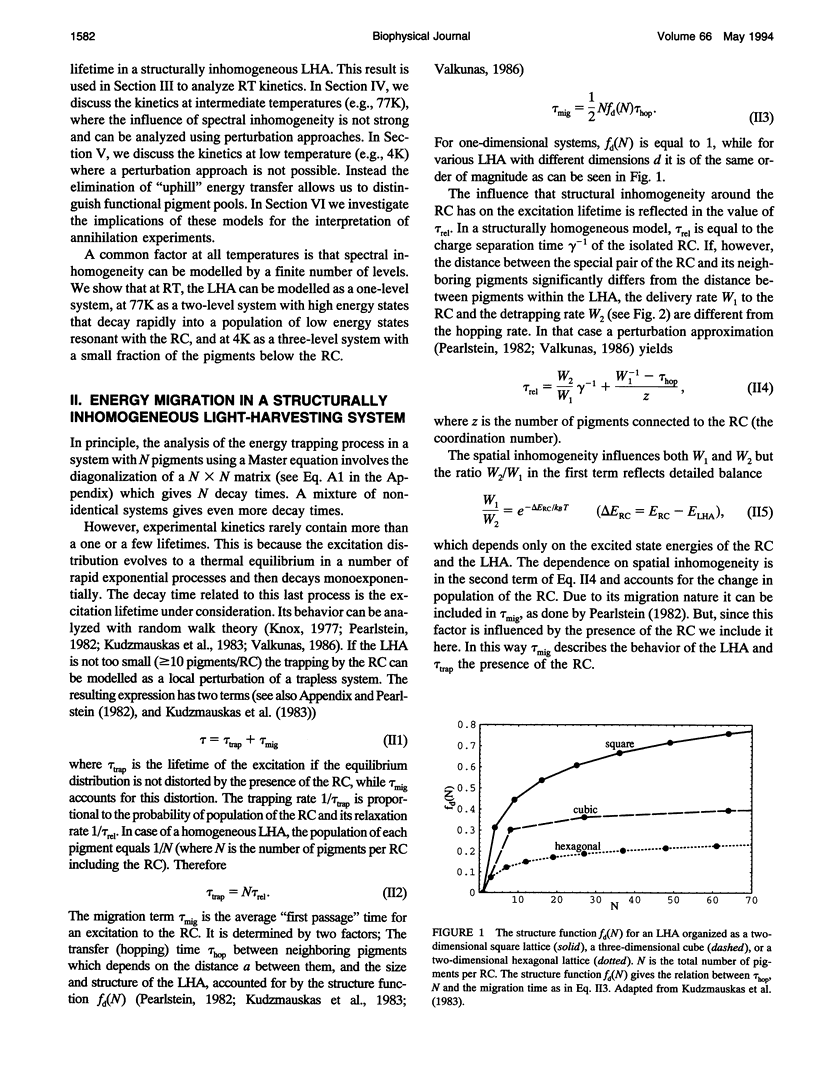
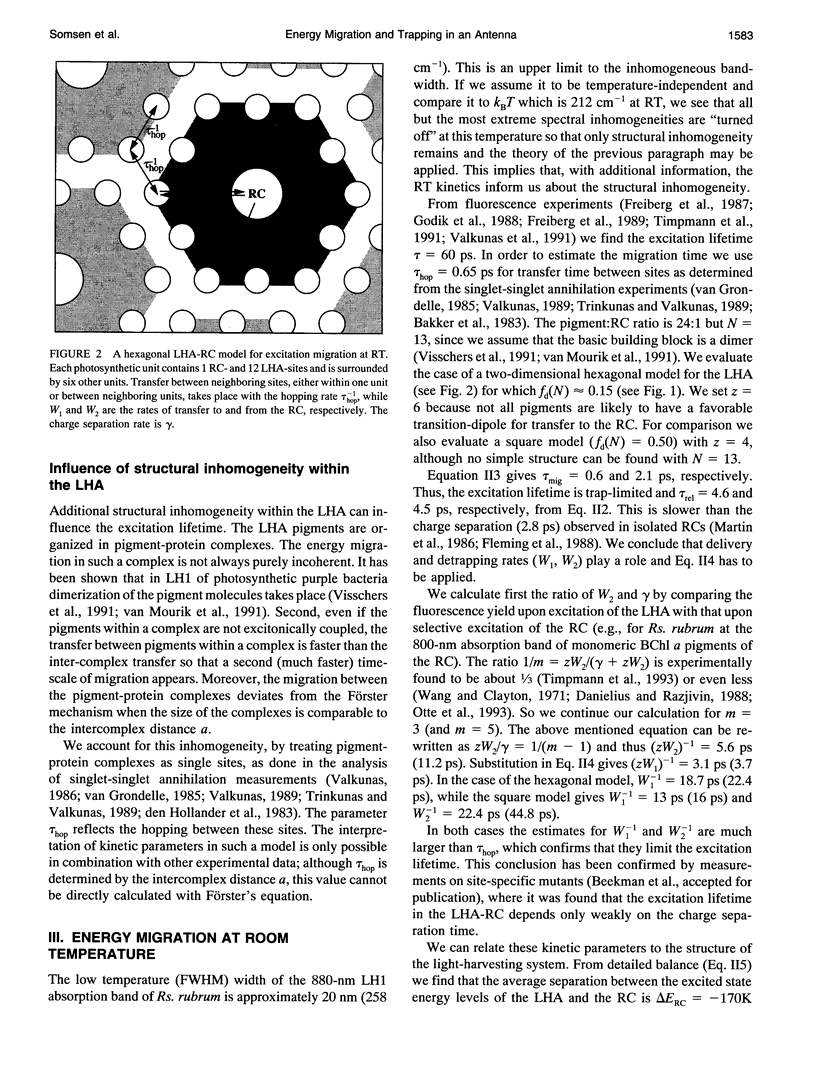
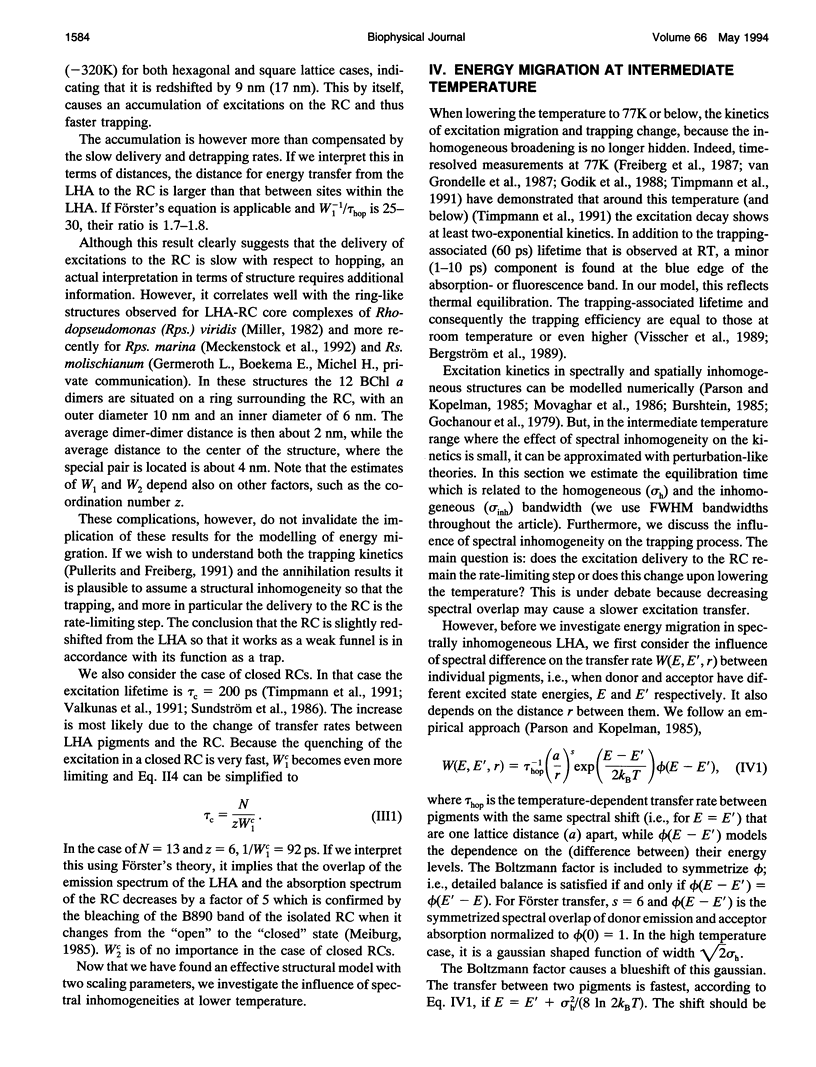
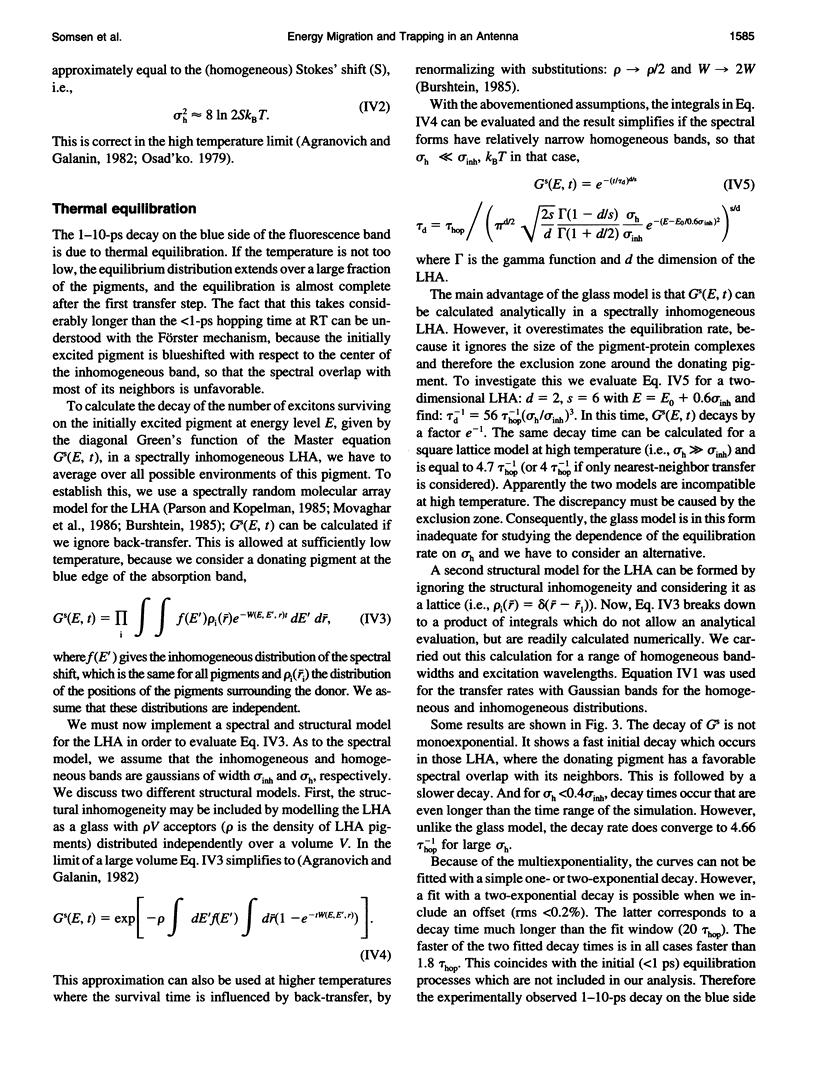
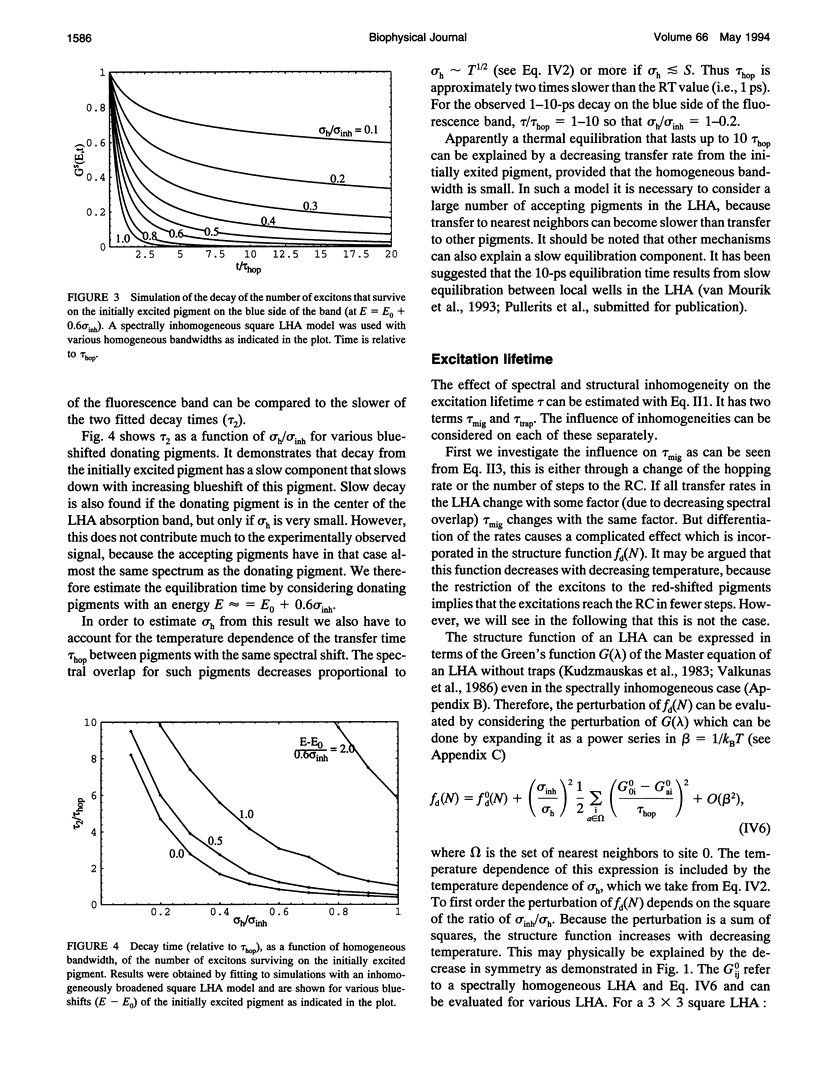
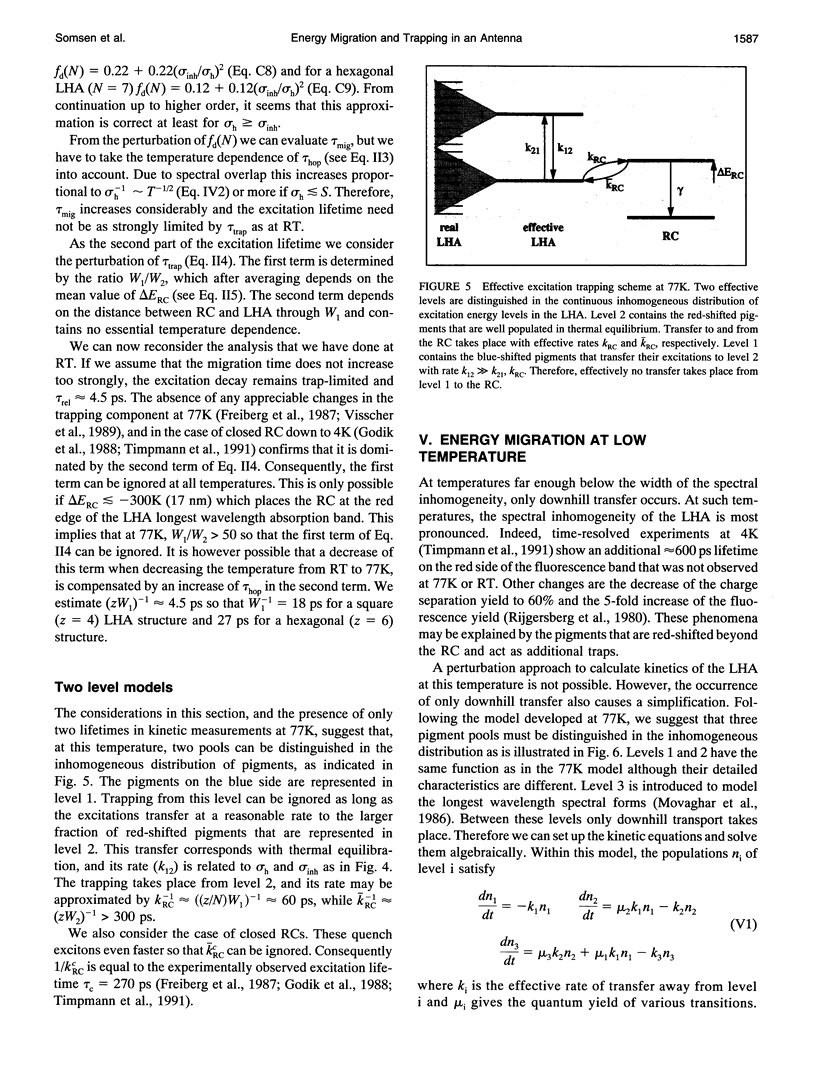
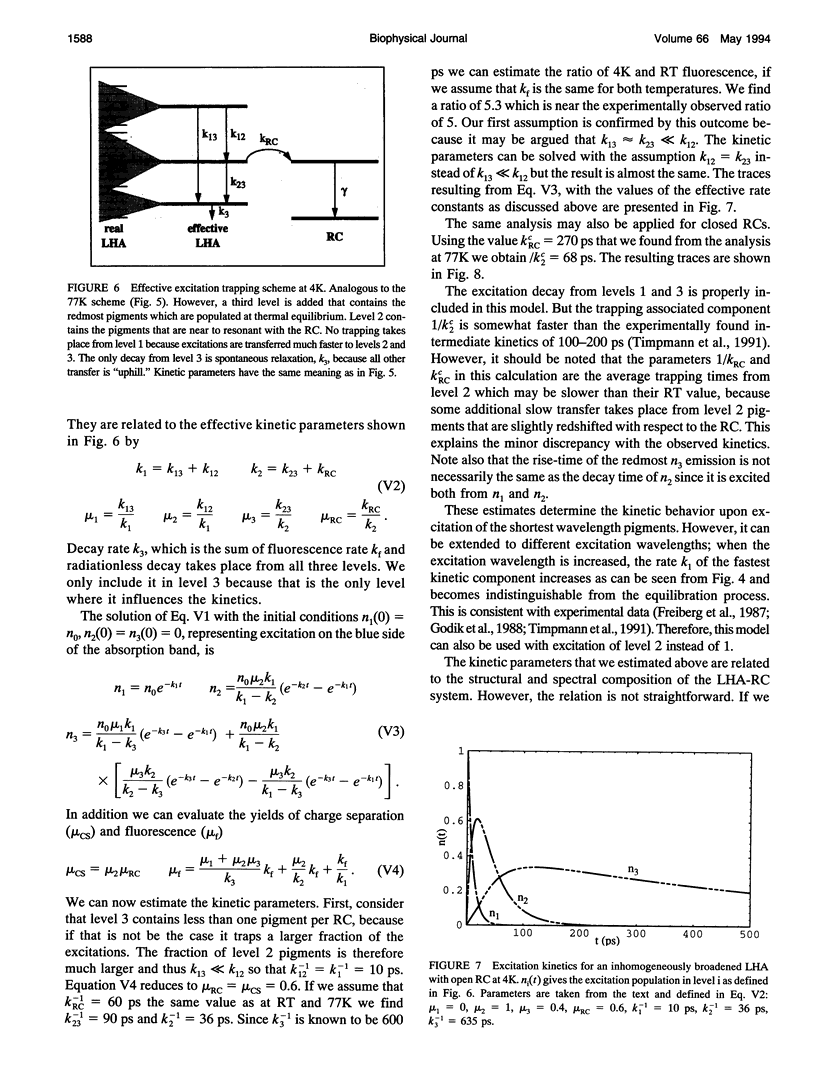
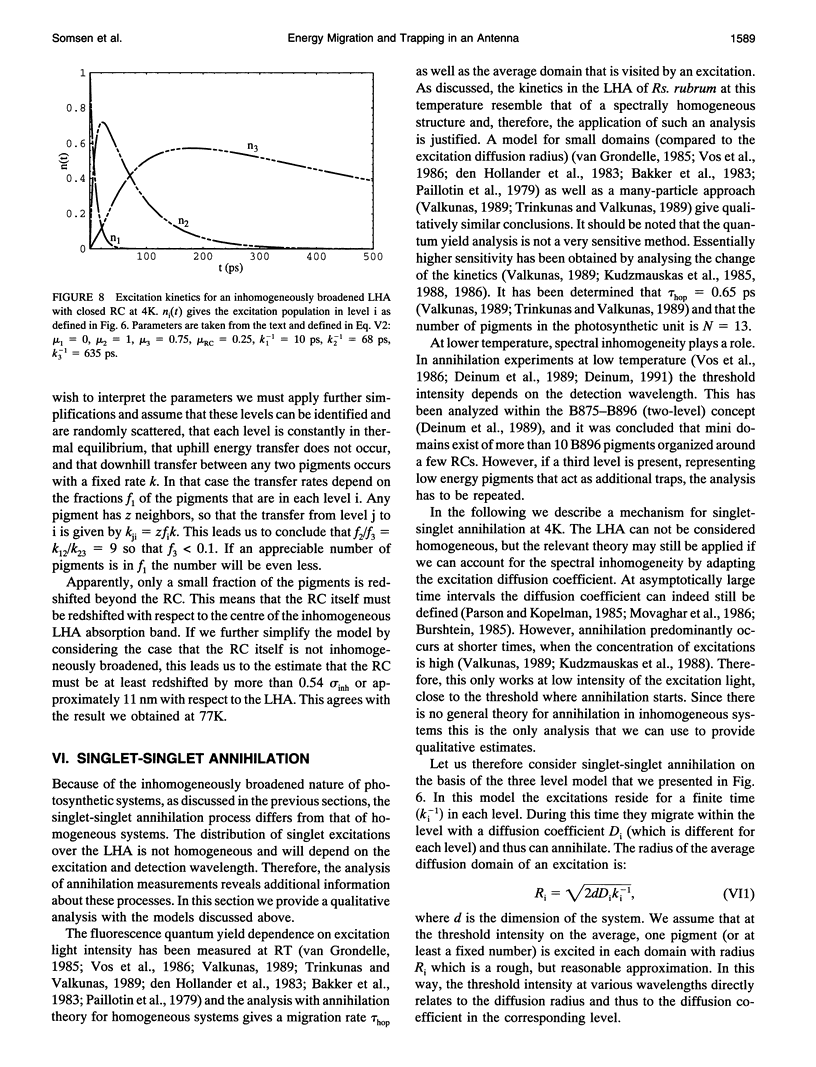
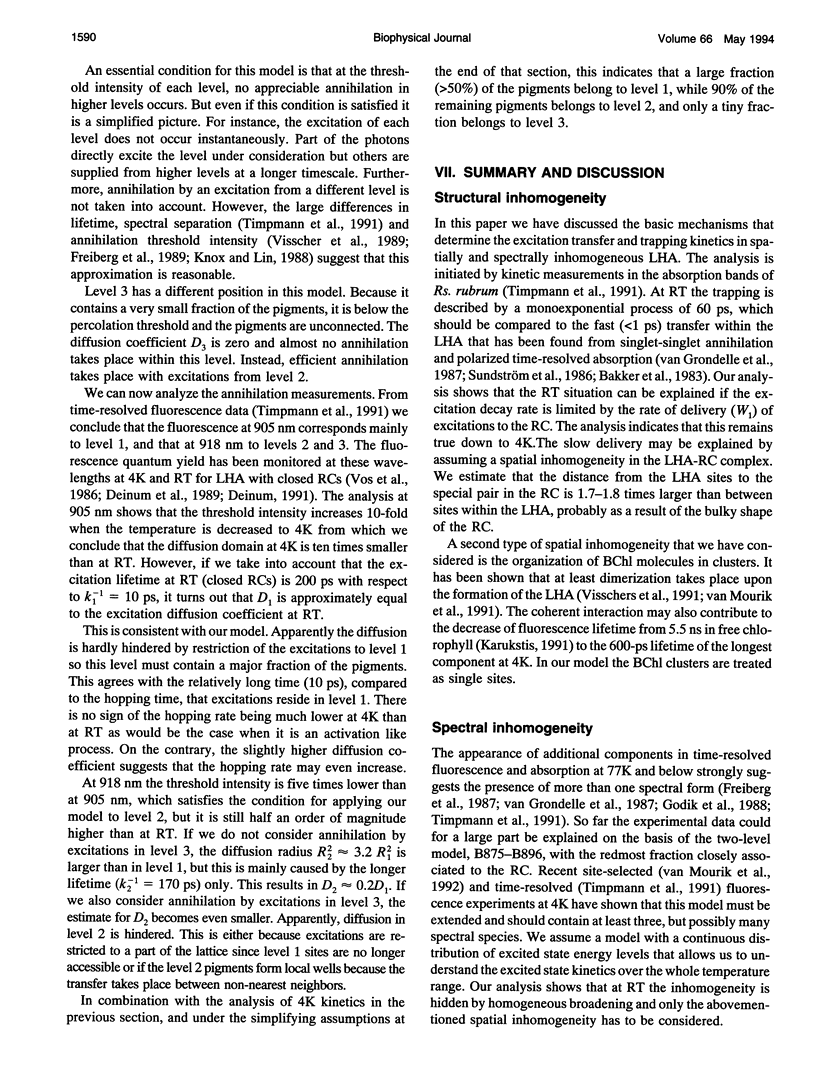
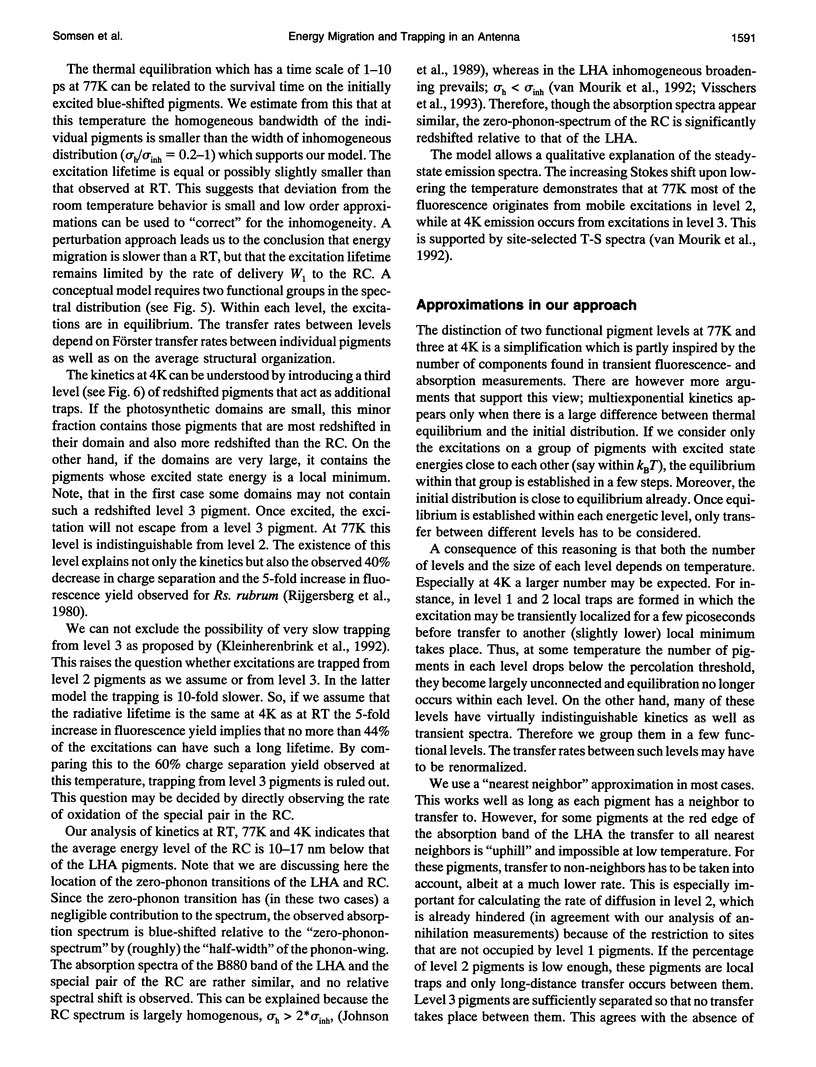
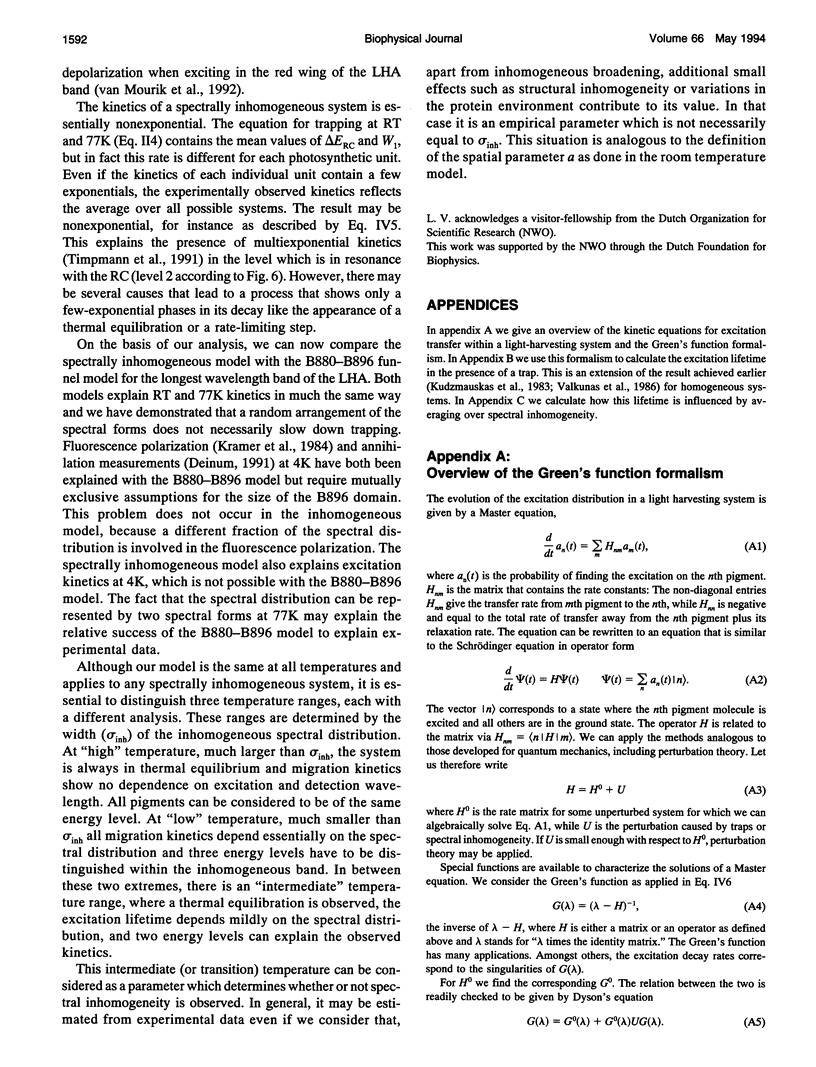

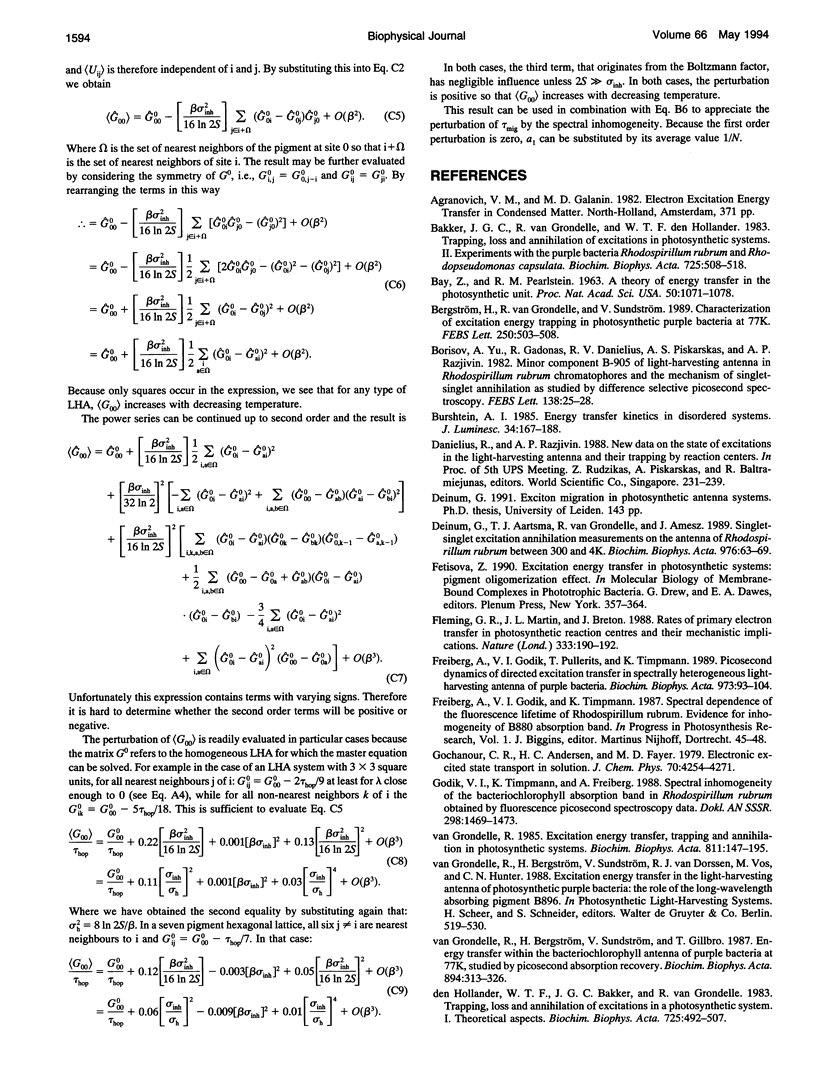
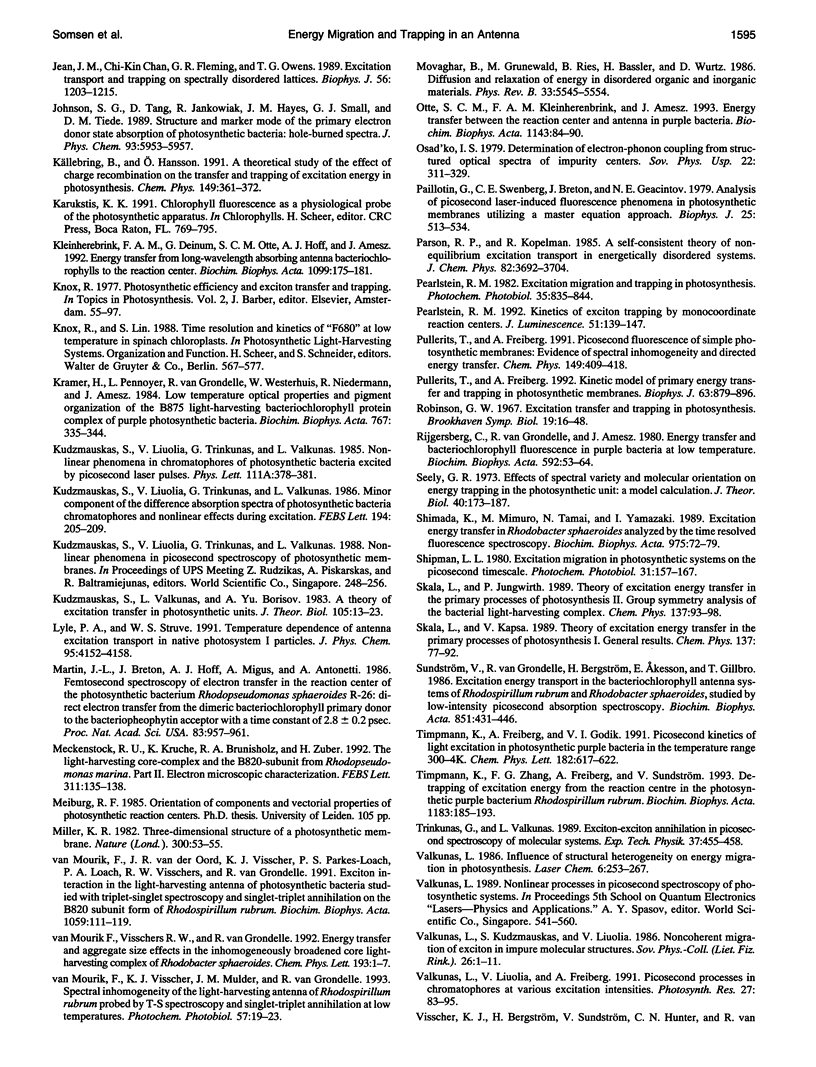
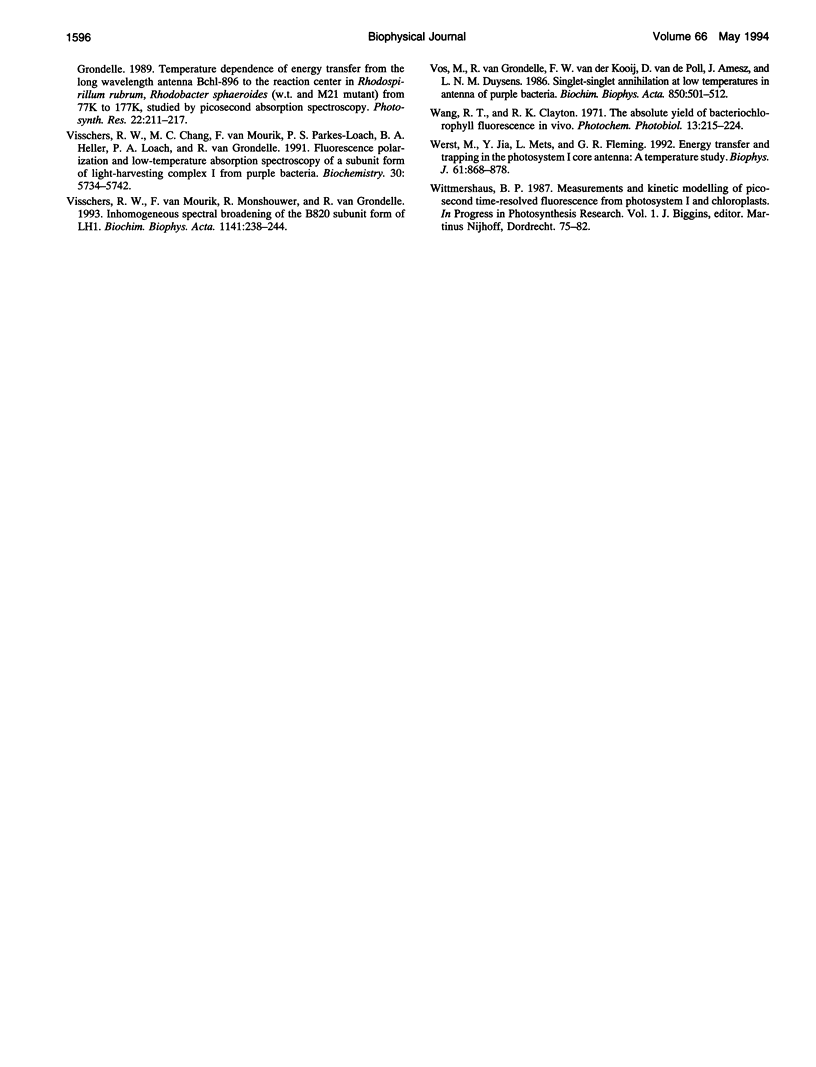
Images in this article
Selected References
These references are in PubMed. This may not be the complete list of references from this article.
- BAY Z., PEARLSTEIN R. M. A THEORY OF ENERGY TRANSFER IN THE PHOTOSYNTHETIC UNIT. Proc Natl Acad Sci U S A. 1963 Dec;50:1071–1078. doi: 10.1073/pnas.50.6.1071. [DOI] [PMC free article] [PubMed] [Google Scholar]
- Jean J. M., Chan C. K., Fleming G. R., Owens T. G. Excitation transport and trapping on spectrally disordered lattices. Biophys J. 1989 Dec;56(6):1203–1215. doi: 10.1016/S0006-3495(89)82767-5. [DOI] [PMC free article] [PubMed] [Google Scholar]
- Kudzmauskas S., Valkunas L., Borisov A. Y. A theory of excitation transfer in photosynthetic units. J Theor Biol. 1983 Nov 7;105(1):13–23. doi: 10.1016/0022-5193(83)90421-6. [DOI] [PubMed] [Google Scholar]
- Martin J. L., Breton J., Hoff A. J., Migus A., Antonetti A. Femtosecond spectroscopy of electron transfer in the reaction center of the photosynthetic bacterium Rhodopseudomonas sphaeroides R-26: Direct electron transfer from the dimeric bacteriochlorophyll primary donor to the bacteriopheophytin acceptor with a time constant of 2.8 +/- 0.2 psec. Proc Natl Acad Sci U S A. 1986 Feb;83(4):957–961. doi: 10.1073/pnas.83.4.957. [DOI] [PMC free article] [PubMed] [Google Scholar]
- Meckenstock R. U., Krusche K., Brunisholz R. A., Zuber H. The light-harvesting core-complex and the B820-subunit from Rhodopseudomonas marina. Part II. Electron microscopic characterisation. FEBS Lett. 1992 Oct 19;311(2):135–138. doi: 10.1016/0014-5793(92)81384-x. [DOI] [PubMed] [Google Scholar]
- Movaghar B, Grünewald M, Ries B, Bassler H, Würtz D. Diffusion and relaxation of energy in disordered organic and inorganic materials. Phys Rev B Condens Matter. 1986 Apr 15;33(8):5545–5554. doi: 10.1103/physrevb.33.5545. [DOI] [PubMed] [Google Scholar]
- Paillotin G., Swenberg C. E., Breton J., Geacintov N. E. Analysis of picosecond laser induced fluorescence phenomena in photosynthetic membranes utilizing a master equation approach. Biophys J. 1979 Mar;25(3):513–533. doi: 10.1016/S0006-3495(79)85320-5. [DOI] [PMC free article] [PubMed] [Google Scholar]
- Pullerits T., Freiberg A. Kinetic model of primary energy transfer and trapping in photosynthetic membranes. Biophys J. 1992 Oct;63(4):879–896. doi: 10.1016/S0006-3495(92)81688-0. [DOI] [PMC free article] [PubMed] [Google Scholar]
- Rijgersberg C. P., van Grondelle R., Amesz J. Energy transfer and bacteriochlorophyll fluorescence in purple bacteria at low temperature. Biochim Biophys Acta. 1980 Aug 5;592(1):53–64. doi: 10.1016/0005-2728(80)90113-9. [DOI] [PubMed] [Google Scholar]
- Robinson G. W. Excitation transfer and trapping in photosynthesis. Brookhaven Symp Biol. 1966;19:16–48. [PubMed] [Google Scholar]
- Seely G. R. Effects of spectral variety and molecular orientation on energy trapping in the photosynthetic unit: a model calculation. J Theor Biol. 1973 Jul;40(1):173–187. doi: 10.1016/0022-5193(73)90170-7. [DOI] [PubMed] [Google Scholar]
- Visschers R. W., Chang M. C., van Mourik F., Parkes-Loach P. S., Heller B. A., Loach P. A., van Grondelle R. Fluorescence polarization and low-temperature absorption spectroscopy of a subunit form of light-harvesting complex I from purple photosynthetic bacteria. Biochemistry. 1991 Jun 11;30(23):5734–5742. doi: 10.1021/bi00237a015. [DOI] [PubMed] [Google Scholar]
- Wang R. T., Clayton R. K. The absolute yield of bacteriochlorophyll fluorescence in vivo. Photochem Photobiol. 1971 Mar;13(3):215–224. doi: 10.1111/j.1751-1097.1971.tb06107.x. [DOI] [PubMed] [Google Scholar]
- Werst M., Jia Y., Mets L., Fleming G. R. Energy transfer and trapping in the photosystem I core antenna. A temperature study. Biophys J. 1992 Apr;61(4):868–878. doi: 10.1016/S0006-3495(92)81894-5. [DOI] [PMC free article] [PubMed] [Google Scholar]





